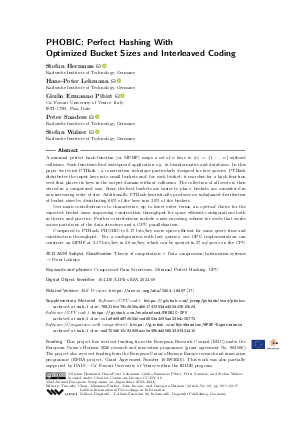LIPIcs.ESA.2024.69.pdf
- Filesize: 1.1 MB
- 17 pages

 Creative Commons Attribution 4.0 International license
Creative Commons Attribution 4.0 International license





Feedback for Dagstuhl Publishing